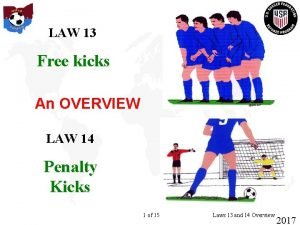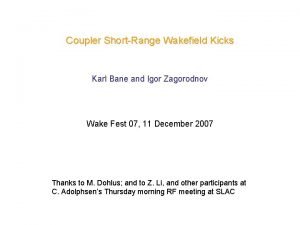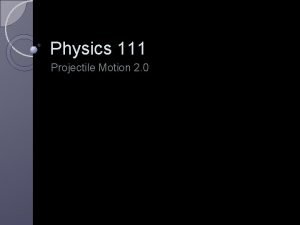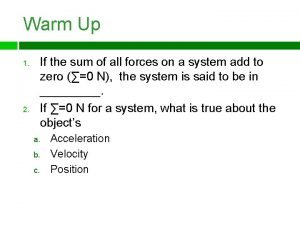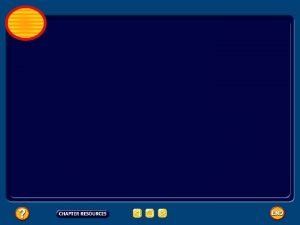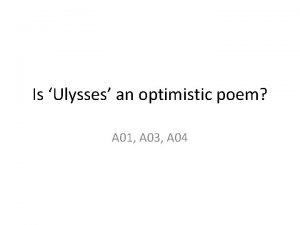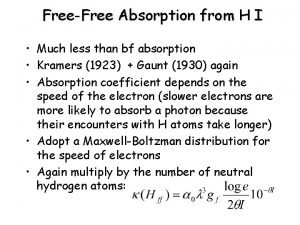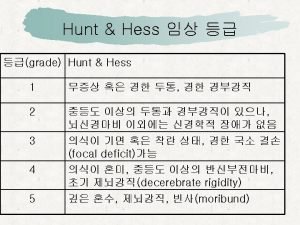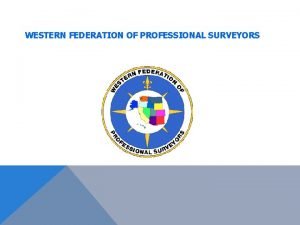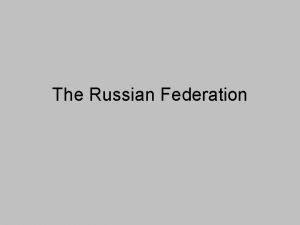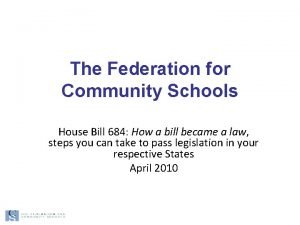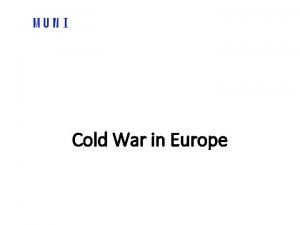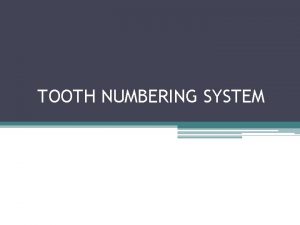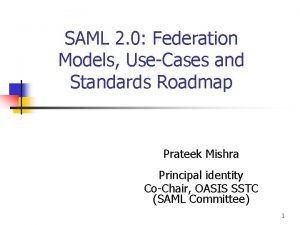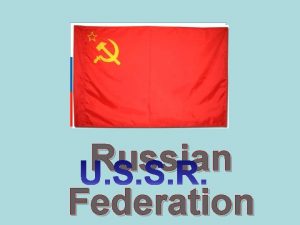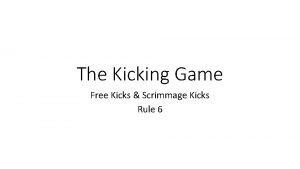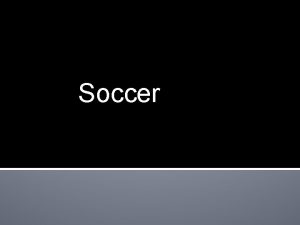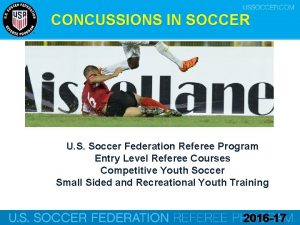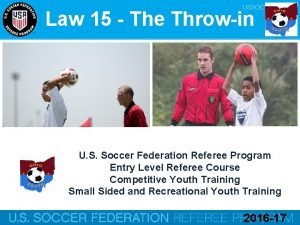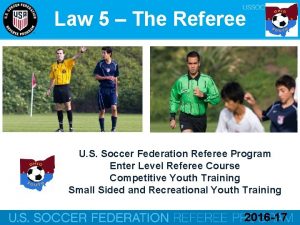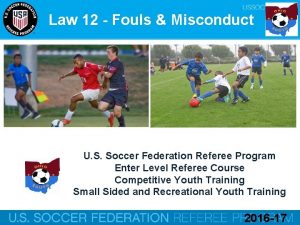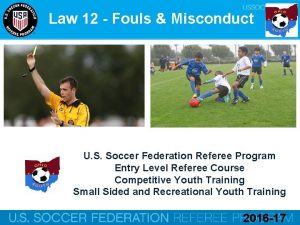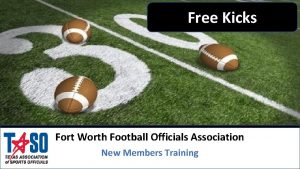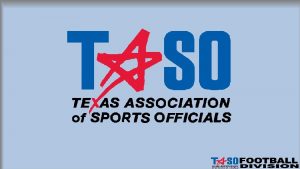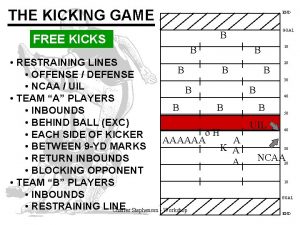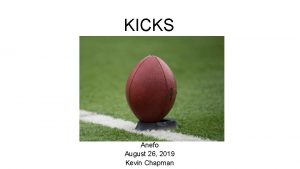Law 13 Free Kicks U S Soccer Federation








































- Slides: 40

Law 13 – Free Kicks U. S. Soccer Federation Referee Program Entry Level Referee Course Competitive Youth Training Small Sided and Recreational Youth Training 2016 -17

Free Kick Types There are two types of free kick restarts § Direct Free Kick (DFK) Goal can be scored directly (first touch) § Indirect Free Kick (IFK) Ball must be touched by another player other than the kicker before entering the goal

Free Kick Types When player commits a direct free kick (DFK) foul outside their own Penalty Area or when a player commits an indirect free kick (IFK) offense anywhere on the field, the referee stops play and restarts with a free kick. If a direct free kick (DFK) offense is committed by a player within their own Penalty Area, the result is a penalty kick (PK) for the opposing team. See Law 14.

Free Kick Types Indirect Free Kick (IFK) Referee uses a raised arm to signal

Free Kick Types • Referees should be sure to take note of the local rules of competition. • Some small-sided and recreational youth games may require that all free kicks be either indirect or direct.

Ball Position The free kick is usually taken from the location on the field of play where the foul occurred. There are six (6) exceptions to this placement of the ball.

Ball Position Exception 1 When a defending player commits any one of the ten DFK fouls against an opponent anywhere within their own Penalty Area, play is restarted with a penalty kick. The penalty kick is taken from the penalty mark – not where the foul occurred.

Ball Position Exception 2 When an indirect free kick (IFK) has been awarded to the attacking team inside their opponent’s goal area. Here, the ball is moved and placed on the goal area line closest to where the infraction occurred.

Ball Position Exception 3 When a DFK or an IFK has been awarded to the defending team inside their goal area. The free kick can be taken from anywhere in the Goal Area.

Ball Position Exception 4 When a player running along the touch line leaves the field as part of play and commits an offense against another player. Touch Line Play is restarted with a free kick on the touch line nearest where the offense occurred.

Ball Position Exception 5 When a player running along the goal line leaves the field as part of play and commits an offense against another player. Goal Line Play is restarted with: § a free kick on the goal line nearest where the offense occurred … or § a penalty kick if a DFK offense is committed within the width of the offender’s own Penalty Area.

Free Kick Rules The ball must be stationary prior to being kicked back into play. The ball is in play once it is kicked and clearly moves. If the kick is taken by a team from within their own Penalty Area, the ball must also completely leave the Penalty Area (on the first touch) before it’s in play.

Free Kick Rules The player taking the free kick cannot touch the ball again until it has been touched any other player. If the player taking the free kick touches the ball a second time before another player from either team touches it, an indirect free kick (IFK) is awarded to the opposing team (at the spot of the 2 nd touch).

Player Position All opponents should be at least the minimum required distance in all directions from the location of any free kick. It’s the opponents’ duty to move the required distance away without being directed by the referee.

Player Position The minimum required distance away from the free kick is: § 10 yds. (U 13 and older) § 8 yds. (U 9 thru U 12) Officials must know the local competition rules to ensure that the proper guidelines are being followed. Some small-sided and recreational youth games may have minimum distance requirements other than what’s listed above.

Player Position Exceptions There a few situations where the opposing players may be required to be more than or allowed to be less than the required minimum distance from the ball at the taking of a free kick.

Position Exceptions 1 When a defensive team takes a free kick from inside their own Penalty Area. Since the opposing players must be outside of the Penalty Area, the minimum distance oftentimes might be greater than the minimum required distance.

Position Exceptions 2 When an indirect free kick (IFK) has been awarded to the attacking team inside their opponent’s goal area. Here, the ball must be moved out to the goal area line. The defenders are allowed to make a wall on the goal line between the goalposts.

Position Exceptions 2 All opposing players standing outside the goalposts, whether on the goal line or not, may not be closer than the minimum required distance away from the ball. When the opposing players make a wall on the goal line between the goalposts, they might be closer than the minimum required distance away from the ball. This is allowed by the Law and is the only time an opponent may be closer than the minimum required distance.

Free Kick Management There also two types of management for free kicks, whether DFK or IFK 1) Quick Free Kick A quick free kick is initiated by the kicking team and does not require involvement from the referee. 2) Ceremonial Free Kick A ceremonial free kick restart should be used anytime the referee determines that the free kick must be delayed for any reason.

Quick Free Kick As stated before, Law 13 requires all opposing players quickly move away to the required distance without being directed by the referee. But the team taking the free kick has the right to start play quickly even if one or more opponents have not yet moved back the required distance, provided all the other restart requirements of Law 13 have been met.

Player Position Encroachment is when opposing players do not respect the minimum required distance during the taking of a free kick. Min. req’d distance in all directions

Player Position Encroachment An encroaching defender who tries to play the ball and makes contact with it, must be cautioned for not respecting the required distance and the free kick retaken.

Quick Free Kick As soon as the ball has been properly placed and is stationary, the attacking team is permitted to play the ball. In the case of a quick free kick, the attacking team does not stop and ask for the opponent to back up the required distance However, the referee should intervene immediately if an opponent is preventing the quick free kick from being taken and warn the defender (maybe caution) for delaying the restart of play.

Quick Free Kick If a player decides to take a free kick quickly and kicks the ball directly to an opponent, who is less than the minimum required distance from the ball, the referee should allow play to continue. If a player decides to take a free kick quickly and an opponent, who is less than minimum required distance from the ball, deliberately prevents the player from taking the kick, the referee must stop play and warn (maybe caution) the defending player.

Ceremonial Free Kick There are times when a ceremonial free kick is necessary because the referee has determined that the restart must be delayed due to some reason considered more important than allowing the kick to be taken quickly.

Ceremonial Free Kick Examples of such reasons include: § when the referee shows a card for misconduct, § if a player was injured before or during the stoppage, § when a legal substitution is requested, § when a request is made by the attacking team to enforce the minimum distance, § when an opponent prevents the quick free kick from being taken or § for any other reason related to game or player management.

Ceremonial Free Kick Play must be restarted with a whistle When the restart is ceremonial, the referee should inform all players to wait for the whistle to restart play and get visual or verbal confirmation that the kicker understands this. When ready for play to continue, the referee signals for the restart by blowing the whistle. If the ball is kicked before the referee’s whistle, the kick must be retaken, and only when the referee is ready.

Walls Defenders may form a wall to defend against free kicks. If the wall is not at least the minimum distance away and the kicking team requests the proper distance, the referee should move the wall back and then the free kick becomes ceremonial.

Walls Again, the referee should tell the kicker to wait for the whistle to restart play and get visual or verbal confirmation from the kicker that they understand. The referee should then back up from the properly placed ball and indicate the required distance, so the wall of players can correctly adjust their position.

Walls After the wall is set the referee should move to their preferred position for the taking of the free kick. When ready, only then should the referee signal for the restart by blowing the whistle.

Managing Free Kicks When managing free kicks, referees can use preventative techniques to avoid potential problems and misconduct. Some of these techniques include § having a presence near the free kick, § being aware of the situation and the potential tactics that the teams might attempt, § being proactive rather than reactive, and § communicating with players, visually and/or verbally.

Free Kick Infringements An indirect free kick (IFK) is awarded to the opposing team if the kicker taking the free kick touches the ball a second time before it has touched another player.

Free Kick Infringements On any free kick, if an encroaching opponent tries to play and makes contact with the ball, the opponent must be cautioned for not respecting the required distance and the free kick retaken.

Free Kick Infringements Remember, a free kick taken by the defending team from within their own penalty area, the ball must leave the penalty area (on the first touch) before it’s in play. If the kicker (or a teammate) touches the ball again before it leaves the penalty area, the kick is re-taken because the ball was not put in play. When an attacker runs into the penalty area while the ball is still in the area and not yet in play, the referee must stop play, retake the free kick and warn (maybe caution) the attacker.

Free Kick Infringements During a ceremonial free kick, the referee must not whistle until and unless all opponents are the required minimum distance away. If an opponent moves forward after the whistle but before the kick, the referee should stop play if this player makes contact with the ball. The player is cautioned and the free kick retaken. If there was no contact with the ball, the referee can let play continue and just verbally warn the opponent.

Review Question 78. A defender commits an indirect free kick offense against an opponent in the goal itself, while the ball is in-play. If the referee stops play, what is the correct restart? A. B. C. D. E. F. Dropped ball Indirect free kick Penalty kick Corner kick Goal Kick Direct free kick

Review Question 79. What action should the referee take if an opponent fails to respect the required distance by lunging toward and blocking a free kick? A. The player should be cautioned and the kick should be retaken B. Play should continue and the player should be cautioned at the next stoppage

Review Question 80. When should the referee allow for a quick free kick to be taken instead of requiring a ceremonial free kick? A. When the referee delays the taking of the free kick for any reason B. When the defending team is still within the required distance, but retreating from the ball, when the kicking team quickly takes the kick

Review Question 81. What is the correct restart if a player kicks the ball directly into the opponent's goal without it being touched by another player from an indirect free kick? A. Corner kick B. Goal kick C. Indirect free kick D. Kick-off
 Law 13 free kicks
Law 13 free kicks Daniel kicks a soccer ball and the trajectory is modeled by
Daniel kicks a soccer ball and the trajectory is modeled by Olivia latimer matildas
Olivia latimer matildas Whats a main idea
Whats a main idea Soccer players learn many skills when playing soccer
Soccer players learn many skills when playing soccer Kicks for life
Kicks for life Different types of kicks
Different types of kicks Panhandle kicks
Panhandle kicks Kicks igor
Kicks igor Penalty kick multiplication
Penalty kick multiplication John kicks the ball and ball does projectile
John kicks the ball and ball does projectile Free body diagram of a football being kicked
Free body diagram of a football being kicked Newton's first law and second law and third law
Newton's first law and second law and third law Newton's first law of motion
Newton's first law of motion Boyle's law charles law avogadro's law
Boyle's law charles law avogadro's law Charles law constant
Charles law constant Newton's 2nd law in soccer
Newton's 2nd law in soccer Newton's second law of motion in soccer
Newton's second law of motion in soccer Gibbs free energy spontaneous
Gibbs free energy spontaneous Boltzmann entropy equation
Boltzmann entropy equation Delta g = delta g + rtlnq
Delta g = delta g + rtlnq A free map determines which blocks are free, allocated.
A free map determines which blocks are free, allocated. Helmholtz free energy
Helmholtz free energy Happy isles ulysses
Happy isles ulysses Summary of the story of an hour
Summary of the story of an hour Free free absorption
Free free absorption Wfns grade
Wfns grade Western federation of professional surveyors
Western federation of professional surveyors World federation of colleges and polytechnics
World federation of colleges and polytechnics Eurasia time zone
Eurasia time zone Federation for community schools
Federation for community schools South warwickshire gp federation
South warwickshire gp federation International federation of environmental health
International federation of environmental health Cloud federation stack
Cloud federation stack Comfed
Comfed Balkan federation
Balkan federation American culinary federation certification
American culinary federation certification Primary teeth numbering system
Primary teeth numbering system Federation models
Federation models Is russia in europe or asia
Is russia in europe or asia New england federation of humane societies
New england federation of humane societies
